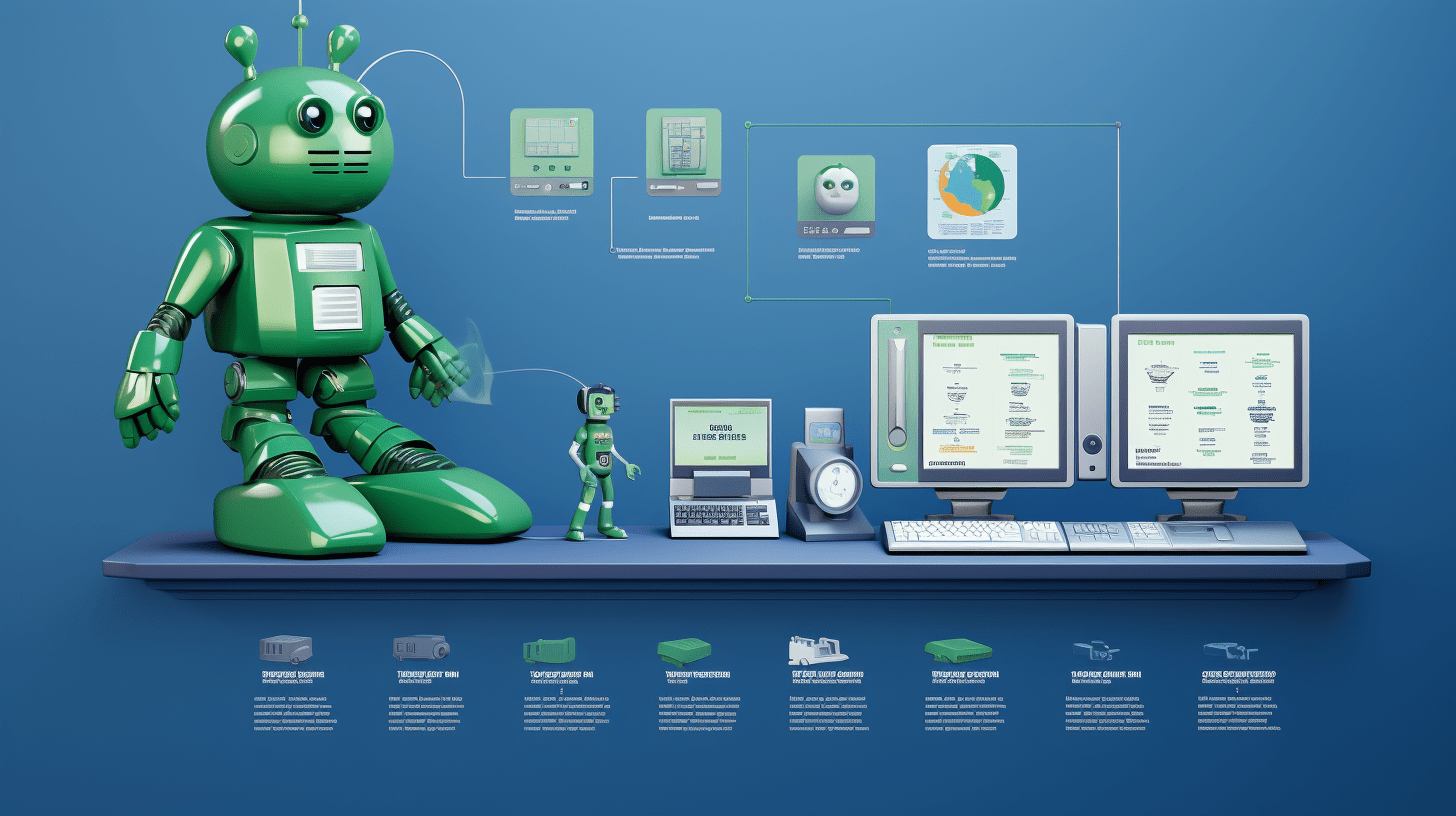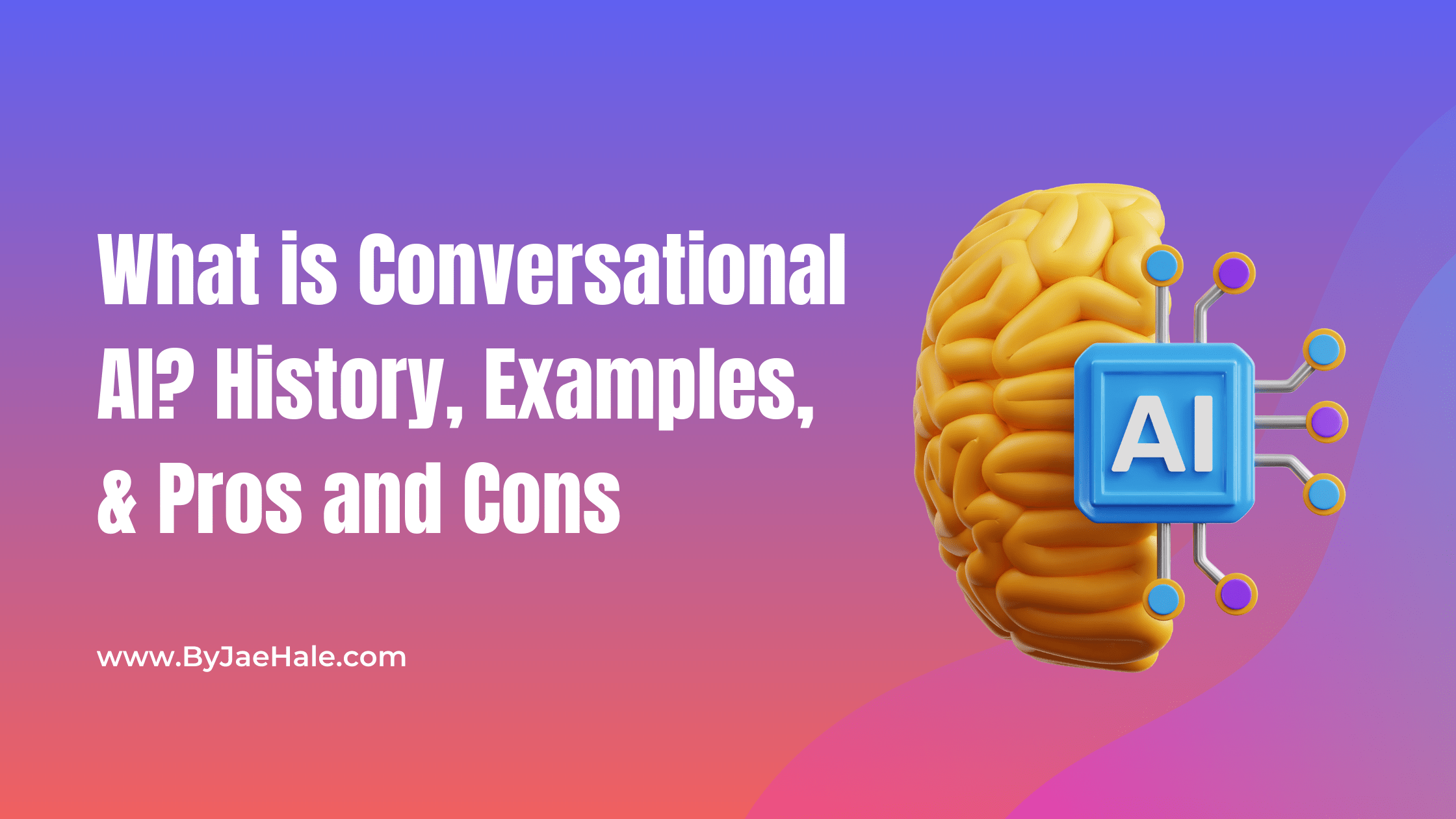Have you been wondering how virtual assistants, customer service bots, and even some video games interact with you in such a human-like way?
That’s Conversational AI, a groundbreaking innovation changing how we communicate with software and devices.
We’re about to delve into its captivating history, diverse applications, and potential challenges.
Ready to discover more about this intriguing tech phenomenon? Let’s dive in.
A Brief History of Conversational AI
Interested in the origins of conversational artificial intelligence? The mid-20th century saw the birth of the first, basic chatbots. They were simple, but they set the stage for the sophisticated systems we engage with today.

As technology sprinted ahead, these systems evolved, becoming more nuanced and adept.
Moving from basic text responses to complex, context-aware conversations, the evolution of Conversational AI is a riveting tale of human innovation. As we delve deeper into its past, we’ll spotlight significant milestones that have marked its progression.
Excited to witness the unfolding of this groundbreaking technology? Let’s keep going.
From Chatbots to Advanced Dialog Systems
So how did we progress from simple chatbots to the complex dialog systems we see today? The path is marked by the constant evolution of conversational AI solutions.
In the early days, a conversational AI chatbot was quite straightforward:
- They could respond to uncomplicated prompts.
- They adhered to pre-determined scripts.
- However, their understanding of language and context was limited.
Present day paints a different picture. Conversational AI solutions have evolved into intricate dialog systems. They’re now capable of:
- Understanding complex inquiries.
- Learning from past interactions to enhance future responses.
- Engaging in conversations that feel surprisingly human-like.
This evolution has been driven by two key technologies: Natural Language Processing (NLP) and Understanding (NLU). These technologies are the gears that power Conversational AI. They enable it to do more than just respond – they allow it to comprehend requests, answer queries, and even navigate layered conversations.
Major Milestones in Conversational AI Development
There have been significant milestones in Conversational AI development. It’s a captivating journey marked by continuous evolution and innovation.
Initially, human agents were at the forefront of customer interactions:
- They managed all customer inquiries and issues.
- From phone calls to emails, they were the face of customer service.
But as technology progressed, we saw some major shifts. Here are the key milestones that have shaped Conversational AI:
- The birth of basic chatbots, capable of responding to simple prompts.
- The introduction of Natural Language Processing, allowing AI to decode human language.
- The advent of Natural Language Understanding, enabling AI to grasp not just the words, but the context and intention behind them.
These advancements have transformed Conversational AI from a simple response generator to a system capable of understanding requests, answering queries, and engaging in complex conversations.
How does Conversational AI work?
Curious about the magic behind Conversational AI’s human-like interaction?

There are two game-changing technologies at its core: Natural Language Processing (NLP) and Natural Language Understanding (NLU), both of which are part of a broader set of AI terms and concepts that are integral to how Conversational AI functions.
Natural Language Processing
This is what enables AI to read and comprehend human language. It’s like the AI’s own personal linguist, helping it decode everything from different languages and dialects to the most uncommon slang. Through NLP, sentences are dissected into individual words, and their structure analyzed.
But understanding the words is only part of the story. That’s where Natural Language Understanding comes into play.
Natural Language Understanding
This technology allows the AI to dive deeper, grasping the context and intention behind the words. It’s the secret sauce that lets Conversational AI do more than just respond – it can understand requests, answer queries, and even carry a complex conversation.
These two technologies are the backbone of Conversational AI, allowing it to converse in a way that feels incredibly human.
Examples of Conversational AI Technology
Let’s explore the world of Conversational AI technology. It’s a vibrant landscape, brimming with cutting-edge conversational AI tools powered by machine learning.

Conversational AI tools are game-changers, completely transforming the way businesses engage with their customers. They’re making digital interactions feel more natural, efficient, and human-like than ever before.
Chatbots
Ever interacted with an AI chatbot? They’re a classic example of Conversational AI technology. These chatbots are designed to mimic human-like interactions, choosing the most appropriate response from a pre-set list.
But modern AI chatbots go beyond scripted responses:
- They leverage Natural Language Processing to decode languages and dialects.
- They use Natural Language Understanding to grasp the context and intention behind words.
- They’re capable of carrying a complex conversation, making interactions feel human-like.
Voice-Enabled Virtual Assistants
Voice-enabled virtual assistants have taken Conversational AI to a whole new level. They use a technology called Natural Language Generation to converse in a way that mimics human conversation. This means they:
- Can understand and respond to voice commands.
- Can engage in interactive conversations.
- Can even adapt their responses based on the context of the conversation.
Social Media Bots
Social media bots are another remarkable application of Conversational AI technology. They’re designed to understand customer intent and respond accordingly. Here’s what they can do:
- Analyze customer queries and comments on social media platforms.
- Provide instant responses, improving customer engagement.
- Handle multiple inquiries simultaneously, ensuring efficient customer service.
Customer Service Bots
Customer service bots are revolutionizing the way businesses interact with their customers. They’re designed to enhance the customer experience by handling customer service conversations efficiently. Key features include:
- They can answer customer queries instantly.
- They can navigate complex conversations, thanks to NLU.
- They can learn from past interactions to improve future responses.
Healthcare Applications
Conversational AI is also making waves in the healthcare industry. AI-powered applications are being used to facilitate human-like interactions between patients and healthcare providers. These applications can:
- Understand and respond to patient queries.
- Provide health-related advice based on the patient’s symptoms.
- Schedule appointments, making healthcare more accessible.
What Are the Pros and Cons of Conversational AI?
Ever wondered about the flip sides of Conversational AI? Like any technology, it has its share of highs and lows. Let’s delve into both.

Benefits of Conversational AI
How can a conversational AI tool be beneficial? Here’s what makes it a game-changer:
- Boosted Efficiency: These tools can multitask, handling multiple queries at once.
- Always Available: They’re your on-call team, ready to assist 24/7.
- Personal Touch: Through learning from past interactions, they can customize responses, adding a personal flavor to AI communications.
- Savings: By taking care of routine tasks, they free up human resources for more challenging work, and even open up new avenues for making money with AI.
Main Challenges in Conversational AI
Despite its perks, implementing conversational AI applications comes with its own set of hurdles:
- Deciphering Complexity: AI might stumble on complex or ambiguous inputs where a human could easily navigate.
- Missing Empathy: While AI can mimic human conversation, it lacks the empathy and nuanced understanding of a human agent.
- Privacy Concerns: With sensitive data at play, ensuring robust security measures is crucial.
By understanding these pros and cons, businesses can deploy Conversational AI effectively.
What Is Conversational AI Doing for Consumers
Conversational AI is shaping our consumer world. It’s like having an assistant who not only understands your commands but also speaks your language. Let’s explore this further.

Impact on Daily Life
Interested in how Conversational AI sneaks into your daily life? Here are some ways it’s become a part of our routine:
- Virtual Assistants: Siri, Alexa, and others are all products of Conversational AI. They’re the friendly helpers who set your alarms, play your favorite tunes, and even tell you jokes.
- Customer Service: Ever chatted with a customer service bot online? That’s Conversational AI in action, helping businesses provide instant support.
- Smart Homes: From adjusting your thermostat to locking your doors, Conversational AI makes managing your smart home as easy as saying “Hey Google”.
Changing Consumer Expectations
Conversational AI isn’t just transforming our daily lives; it’s reshaping our expectations too. Here’s how:
- Instant Responses: With AI chatbots providing real-time assistance, consumers now expect immediate responses to their queries.
- Personalized Interactions: Conversational AI’s ability to learn from past interactions has led to consumers expecting more personalized experiences.
- Simplification: As Conversational AI makes complex tasks simpler, consumers increasingly expect technology to be intuitive and easy to use.
Future of Conversational AI
So what lies ahead for Conversational AI systems? Let’s dive into this exciting future.

Emerging Technologies and Trends
Here’s a peek into what’s on the horizon:
- Voice-Activated Systems: As more consumers embrace voice assistants, we can expect further advancements in this area, making interactions even more seamless and natural.
- Multilingual Capabilities: With global reach in mind, Conversational AI systems will likely become more adept at understanding and conversing in multiple languages.
- Emotion Recognition: Future AI might not just understand our words but also our emotions, allowing for more empathetic responses.
The Role of Conversational AI in the Metaverse
Ever wondered how Conversational AI fits into the concept of the Metaverse? As this virtual universe takes shape, AI has a crucial role to play:
- Virtual Interactions: In the Metaverse, Conversational AI could be the key to interacting with the digital environment, from asking for directions to making purchases.
- Avatars: Imagine having AI-powered avatars that can understand and respond to you just like a human would. That’s the potential of Conversational AI in the Metaverse.
- Creating Immersive Experiences: By providing human-like interaction, Conversational AI can make the Metaverse experience more immersive and engaging.
The role of Conversational AI in our digital interactions is set to become even more significant. Its potential in transforming communication and interaction is immense, making our future encounters with technology feel surprisingly human.
Wrapping Up
Our journey into Conversational AI ends here. But the excitement around this tech is just starting. It’s not a passing trend. It’s a communication revolution.
Conversational AI excels in understanding human language. It decodes words and their context. It grasps hidden meanings. It interprets intentions. This is the magic of Conversational AI.
The future is full of potential. We see rapid advancements everywhere: voice-responsive systems, multilingual capabilities, emotion recognition, and more. As we continue to refine these technologies, our digital dialogues become more intuitive and human-like.
The adventure is just beginning.



0 comments